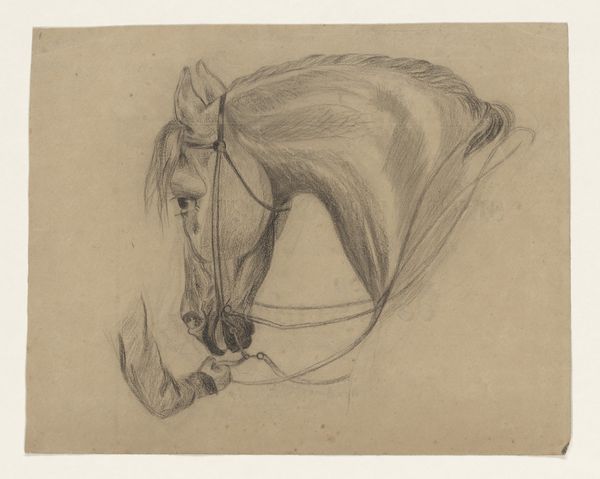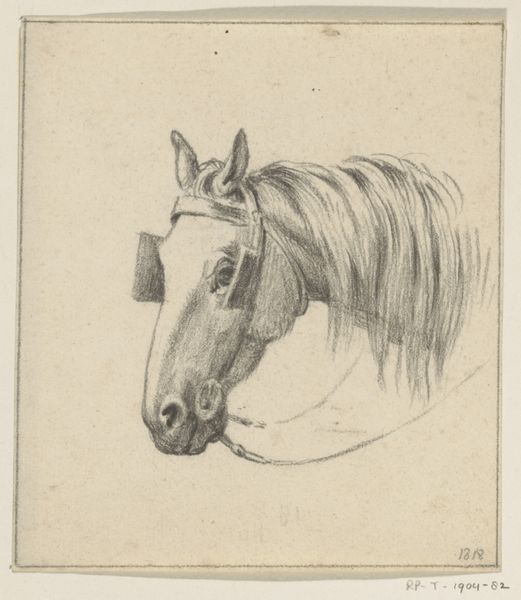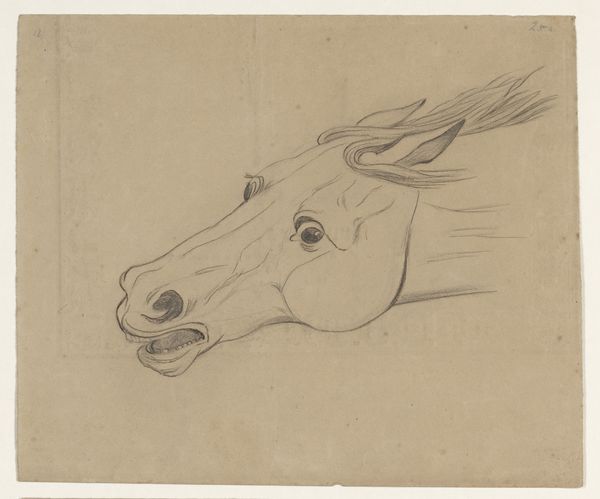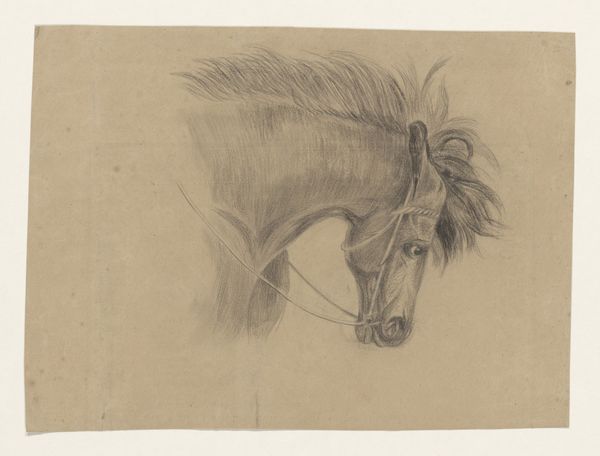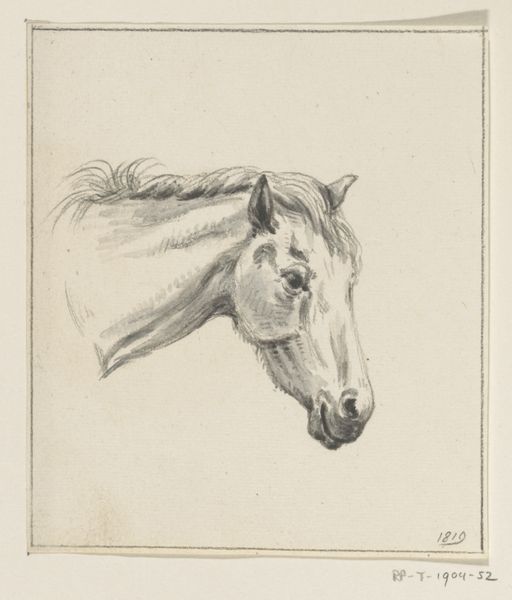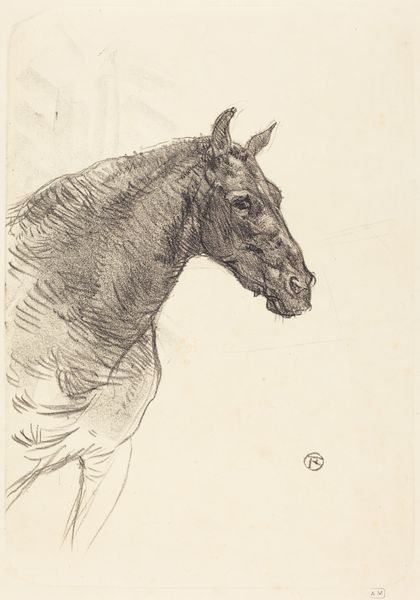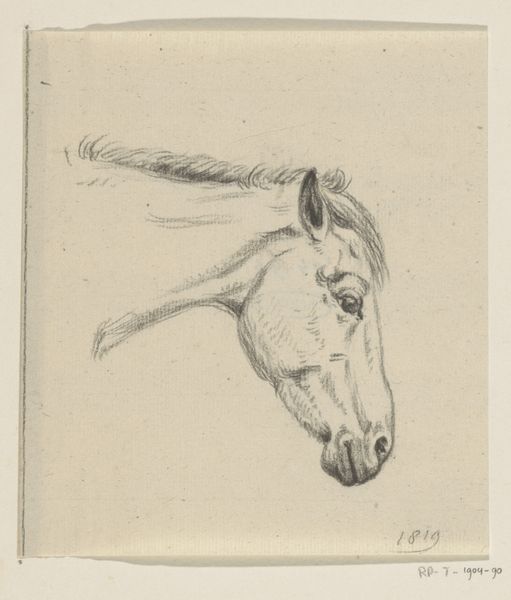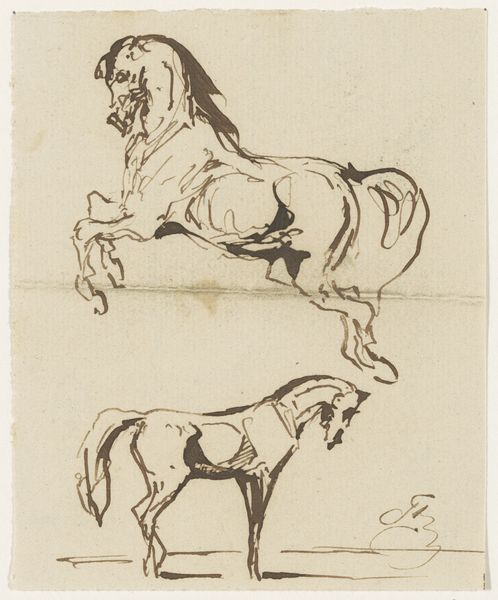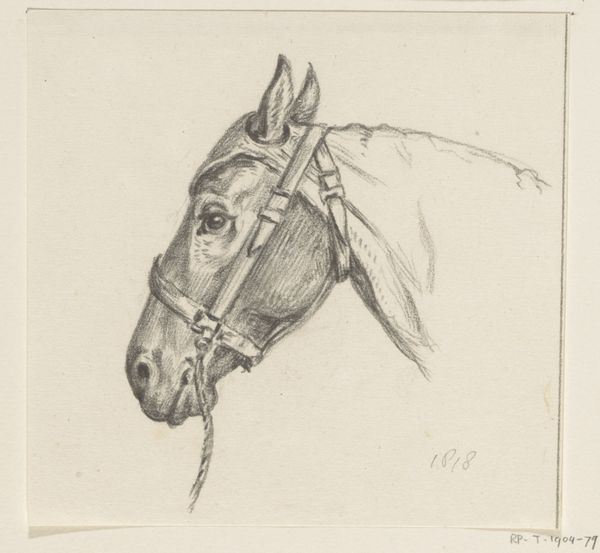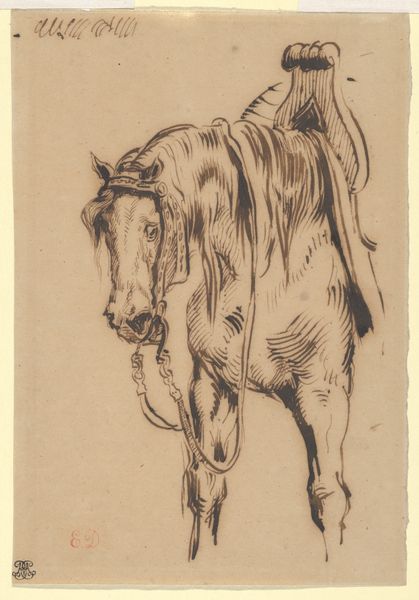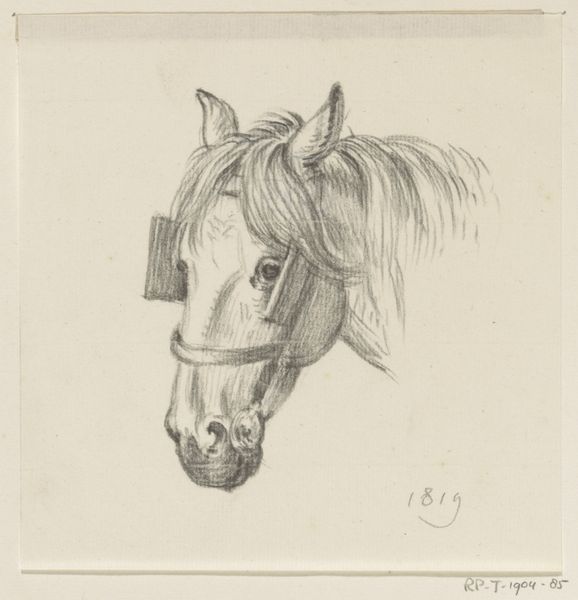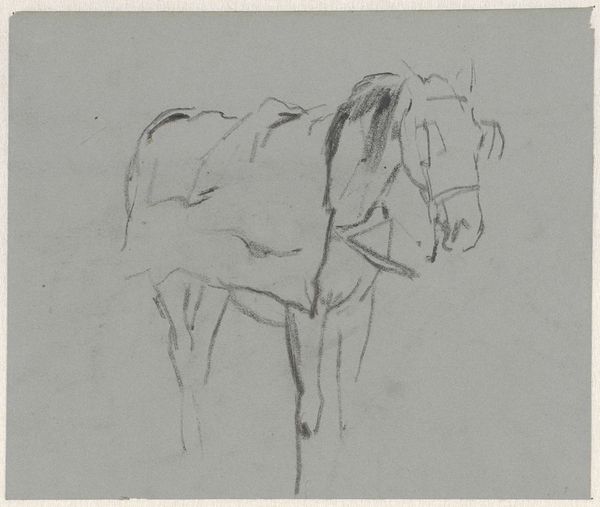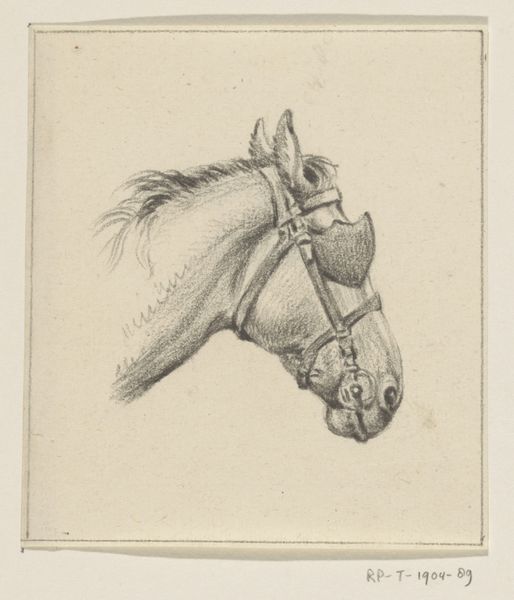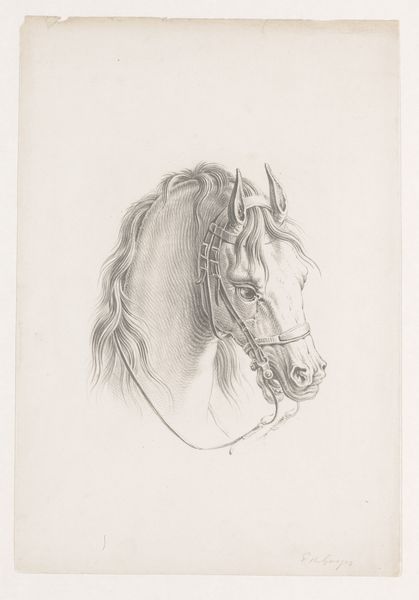
drawing, pencil
#
portrait
#
drawing
#
toned paper
#
light pencil work
#
pen sketch
#
pencil sketch
#
figuration
#
personal sketchbook
#
ink drawing experimentation
#
pen-ink sketch
#
pencil
#
sketchbook drawing
#
watercolour illustration
#
sketchbook art
Dimensions: sheet: 62.23 × 47.94 cm (24 1/2 × 18 7/8 in.)
Copyright: National Gallery of Art: CC0 1.0
Editor: So, this is John Singer Sargent's "Studies for 'The Fall of Gog and Magog'," likely created between 1903 and 1916. It seems to be a pencil and maybe ink drawing on toned paper. The two horses’ heads are just beautifully sketched... I'm curious, what historical context shapes your understanding of this preparatory work? Curator: Well, consider the historical context of monumental decorative programs. Sargent was commissioned to create murals for the Boston Public Library. This commission, like many large public art projects, aimed to uplift the public through grand narratives and aesthetic experience. But also, Sargent wasn't particularly thrilled with the Gog and Magog section; does knowing that change how you see this drawing, perhaps making you consider it more as a task than a passion project? Editor: That's fascinating. Knowing his ambivalence does color my view. Are there specific societal influences impacting this portrayal of destruction that maybe resonate today? Curator: Absolutely. This period, just before and during World War I, was marked by anxieties about societal collapse and moral decay. The "Fall of Gog and Magog" reflects those fears. Notice also how Sargent chose such a specific biblical subject that involves conquest and ruin. And notice how quickly it is sketched, like the figures are rapidly falling, can’t catch themselves! What do you make of that? Editor: It emphasizes the urgency, and the sheer powerlessness against overwhelming forces. The sketches really capture that chaotic energy. I hadn’t thought about the murals as reflecting such contemporary anxieties about societal decline. Curator: Right. Art isn't created in a vacuum. Even preparatory sketches, like these horses' heads, carry echoes of the broader social and political landscape. Studying them is how we can find our present concerns in these artifacts. Editor: I'm leaving this conversation feeling a lot more inspired and with more questions! Thanks so much for this deeper look into Sargent's context and his process.
Comments
No comments
Be the first to comment and join the conversation on the ultimate creative platform.
